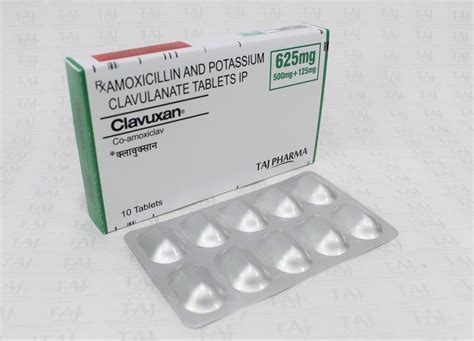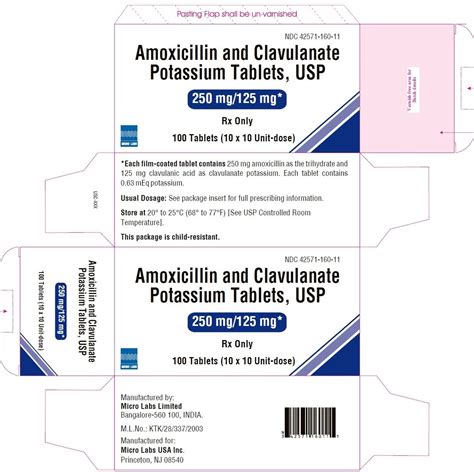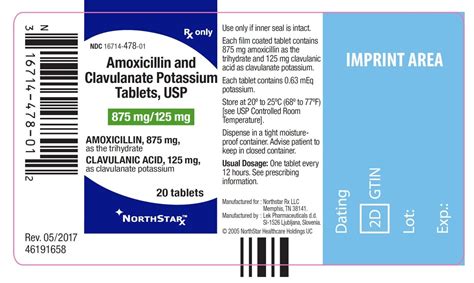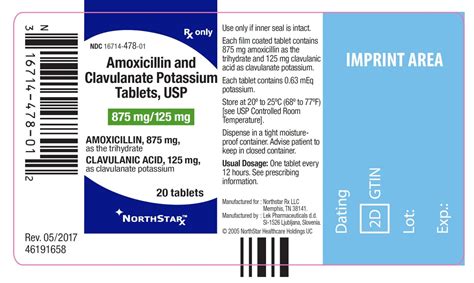Intro
Discover Amox Clavulanate uses, a potent antibiotic combining Amoxicillin and Clavulanic Acid, effective against bacterial infections, treating conditions like pneumonia, sinusitis, and skin infections, with its broad-spectrum activity and resistance to beta-lactamases.
The combination of amoxicillin and clavulanic acid, commonly known as Augmentin, is a widely used antibiotic that has been a cornerstone in the treatment of various bacterial infections. Amox clavulanate uses are diverse, ranging from the treatment of respiratory tract infections to skin and soft tissue infections, among others. The importance of understanding the uses of amox clavulanate lies in its effectiveness against a broad spectrum of bacteria, including those that produce beta-lactamase, an enzyme that can inactivate many antibiotics.
The combination of amoxicillin, a beta-lactam antibiotic, and clavulanic acid, a beta-lactamase inhibitor, makes amox clavulanate particularly effective. Amoxicillin works by inhibiting the synthesis of the bacterial cell wall, leading to cell lysis and death. However, many bacteria produce beta-lactamase, which can break down amoxicillin and render it ineffective. Clavulanic acid inhibits this enzyme, thereby protecting amoxicillin from degradation and extending its spectrum of activity. This dual mechanism of action is crucial for treating infections caused by beta-lactamase-producing bacteria, which are often resistant to other antibiotics.
The versatility of amox clavulanate is evident in its application across various medical specialties. In pediatric medicine, it is commonly used to treat ear, nose, and throat infections, as well as respiratory tract infections such as pneumonia. In adult medicine, it is used for similar purposes, including the treatment of bronchitis, sinusitis, and skin infections. Its efficacy against a wide range of pathogens, including Streptococcus pneumoniae, Haemophilus influenzae, and Staphylococcus aureus, makes it a preferred choice for many clinicians. Understanding the appropriate use of amox clavulanate is essential for ensuring its effectiveness and minimizing the development of antibiotic resistance.
Introduction to Amox Clavulanate

The introduction of amox clavulanate marked a significant advancement in antibiotic therapy, offering a potent and broad-spectrum treatment option for bacterial infections. Its pharmacokinetic properties, including good oral absorption and distribution to tissues, make it effective for treating infections at various sites. The combination of amoxicillin and clavulanic acid is available in various formulations, including tablets, suspensions, and injectables, which facilitates its use in different clinical settings and patient populations.
Pharmacology of Amox Clavulanate
The pharmacology of amox clavulanate is characterized by its synergistic action. Amoxicillin is a beta-lactam antibiotic that interferes with the synthesis of the bacterial cell wall, while clavulanic acid inhibits beta-lactamase enzymes. This combination not only enhances the spectrum of activity but also reduces the development of resistance. The dosing regimen of amox clavulanate is designed to achieve optimal antibiotic levels at the site of infection, ensuring effective treatment while minimizing side effects.Indications for Amox Clavulanate

Amox clavulanate is indicated for the treatment of a variety of bacterial infections. These include:
- Acute bacterial sinusitis
- Acute otitis media
- Lower respiratory tract infections such as acute exacerbations of chronic bronchitis and community-acquired pneumonia
- Skin and soft tissue infections
- Urinary tract infections The choice of amox clavulanate for these conditions is based on its efficacy, safety profile, and the likelihood of the infection being caused by susceptible pathogens.
Benefits of Amox Clavulanate
The benefits of amox clavulanate are multifaceted. It offers a broad spectrum of activity, which makes it effective against a wide range of bacterial infections. Its ability to overcome beta-lactamase-mediated resistance is a significant advantage, allowing for the treatment of infections that would be resistant to other antibiotics. Additionally, amox clavulanate has a relatively favorable safety profile, with common side effects being mild and transient. This makes it suitable for use in various patient populations, including children and adults.Administration and Dosage

The administration and dosage of amox clavulanate depend on the type and severity of the infection, as well as the patient's age, weight, and renal function. It is essential to follow the recommended dosing guidelines to ensure effective treatment and minimize the risk of side effects. The typical dosage for adults is 500 mg/125 mg or 875 mg/125 mg every 12 hours, with adjustments made for renal impairment. In pediatric patients, the dosage is based on weight, typically 25 mg/3.6 mg/kg/day to 45 mg/6.4 mg/kg/day, divided every 12 hours.
Side Effects and Contraindications
While amox clavulanate is generally well-tolerated, it can cause side effects. Common side effects include diarrhea, nausea, vomiting, and rash. Serious but rare side effects include allergic reactions, Stevens-Johnson syndrome, and Clostridioides difficile-associated diarrhea. Amox clavulanate is contraindicated in patients with a history of allergic reactions to any penicillin or beta-lactam antibiotic. It should also be used with caution in patients with renal impairment and those taking medications that interact with amox clavulanate.Resistance and Stewardship

The emergence of antibiotic resistance is a global health concern, and the use of amox clavulanate is not exempt from this issue. The overuse and misuse of antibiotics accelerate the development of resistance, making it essential to use amox clavulanate judiciously. Antibiotic stewardship programs aim to promote the appropriate use of antibiotics, including amox clavulanate, to preserve their effectiveness and minimize the development of resistance. This involves selecting the most appropriate antibiotic for a given infection, using the correct dosage and duration of treatment, and monitoring for signs of resistance.
Future Perspectives
The future of amox clavulanate and other antibiotics depends on the responsible use of these medications and the development of new antimicrobial agents. As resistance patterns evolve, it is crucial to continue monitoring the effectiveness of amox clavulanate and to develop strategies to combat resistance. This includes the discovery of new beta-lactamase inhibitors and the development of novel antibiotic classes. Additionally, improving antibiotic stewardship and promoting public awareness about the appropriate use of antibiotics are key to ensuring the long-term effectiveness of amox clavulanate and other antimicrobial agents.Conclusion and Recommendations

In conclusion, amox clavulanate is a valuable antibiotic for the treatment of various bacterial infections. Its broad spectrum of activity, efficacy against beta-lactamase-producing bacteria, and relatively favorable safety profile make it a preferred choice for many clinicians. However, its use must be balanced with the need to minimize the development of antibiotic resistance. By using amox clavulanate judiciously, following recommended dosing guidelines, and promoting antibiotic stewardship, we can ensure the continued effectiveness of this important antibiotic.
Final Thoughts
As we move forward in the era of increasing antibiotic resistance, the role of amox clavulanate and other antibiotics will continue to evolve. It is essential for healthcare professionals, patients, and the broader community to work together to promote the responsible use of antibiotics and to support the development of new antimicrobial agents. By doing so, we can preserve the effectiveness of amox clavulanate and other antibiotics, ensuring that these lifesaving medications remain available for future generations.What is amox clavulanate used for?
+Amox clavulanate is used to treat a variety of bacterial infections, including respiratory tract infections, skin and soft tissue infections, and urinary tract infections.
How does amox clavulanate work?
+Amox clavulanate works by combining amoxicillin, a beta-lactam antibiotic, with clavulanic acid, a beta-lactamase inhibitor, to effectively treat bacterial infections, including those caused by beta-lactamase-producing bacteria.
What are the common side effects of amox clavulanate?
+Common side effects of amox clavulanate include diarrhea, nausea, vomiting, and rash. Serious but rare side effects can include allergic reactions and Clostridioides difficile-associated diarrhea.
We invite you to share your thoughts and experiences with amox clavulanate, and to ask any questions you may have about its use and efficacy. Your engagement is crucial in promoting the responsible use of antibiotics and in ensuring that these medications remain effective for treating bacterial infections. Please comment below, share this article with others, and join the conversation on the importance of antibiotic stewardship and the role of amox clavulanate in modern medicine.
